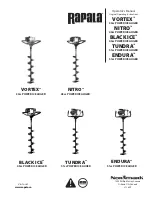
193
• The mixing proportion of antifreeze varies with outside air temperature.
For the mixing proportion, refer to the descriptions under “Inspection and Maintenance 10.3 Irregular
Maintenance [2] Cleaning Inside Engine Cooling System”.
• In the event of overheating, replenish coolant with the engine cold.
• The machine low in coolant may cause overheating as well as corrosion in the coolant circuits attributed
to aeration.
ELECTRICAL PARTS HANDLING
• An electric leakage occurs if electrical parts become wet or have damaged coating, which causes the
machine to go out of order and malfunction.
• Inspection and maintenance include the checking of belt tension, belt damage, and battery electrolyte
level.
• Never remove and disassemble equipment (electrical parts) from the machine.
• Only optional electrical parts that accompany the machine can be installed.
• Keep the electrical parts away from water when the machine is washed and used in the rain.
• When using the machine on coastal areas, keep the electrical parts free of water and impurities to
prevent corrosion.
HYDRAULIC EQUIPMENT HANDLING
• Hydraulic equipment will be at elevated temperatures during and immediately after operation. Hydraulic
equipment operates under high pressure.
The following precautions should be observed when performing inspection and maintenance of
hydraulic equipment.
• Place the machine in travel position on a level surface to inhibit the application of pressure to the
cylinder circuit.
• Be sure to stop the engine.
• Hydraulic oil and lubricating oil will be at elevated temperatures and high pressure immediately after
equipment comes to a stop. Perform inspection and maintenance only after the oil drop in
temperature for safety. An internal pressure may be exerted despite temperature drop. When
removing the plugs, screws and hose joints, stand to the side and loosen gradually to decompress
the interior.
• Be sure to release the pressure by removing the air from the hydraulic oil tank before performing
inspection and maintenance of the hydraulic circuit.
• Inspection and maintenance include hydraulic oil level check and replacement of the filters and
hydraulic oil.
• Check the O-ring for scratches when removing the high-pressure hose. If scratches are found, replace
it.
• Bleeding the air from the hydraulic circuit is required after the following tasks are performed:
replacement and cleaning of the hydraulic oil filter element and strainer, repair and replacement of
hydraulic equipment, and hydraulic piping removal.
Summary of Contents for CC423S-1
Page 2: ......
Page 8: ...vi This Page Intentionally Left Blank...
Page 22: ...14 This Page Intentionally Left Blank...
Page 56: ...48 SAFETY LABEL LOCATIONS 2 2...
Page 59: ...51 24 Machine Mass 542 4773100 28 Working Radius Rated Total Load Chart 542 3582200...
Page 60: ...52 30 Safe Operation 557 3494500 31 Operating the Moment Limiter 542 2250000...
Page 194: ...186 This Page Intentionally Left Blank...
Page 232: ...224...
Page 248: ...240 This Page Intentionally Left Blank...
Page 251: ...243 2 SPECIFICATION DIMENSIONAL DRAWING...
Page 255: ...247 4 WORKING RADIUS LIFTING HEIGHT 4 Fall Wire Rope...
Page 256: ...248 This Page Intentionally Left Blank...
Page 262: ...254 3 MONITOR INDICATION 1 Searcher hook selector switch 2 Searcher hook position display...
Page 276: ......
Page 277: ......
Page 278: ......
















































